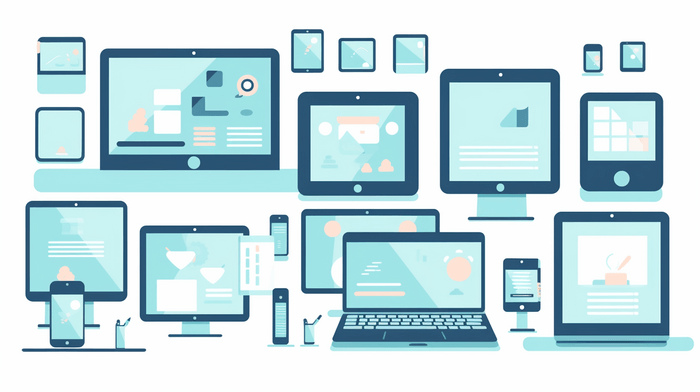
Maybe you don’t know it, but you must have already come across microlearning many times. You may have just subscribed to a social net channel devoted to learning Spanish or some other language. The information you get in the form of short messages (just two or three per day) is, in fact, microlearning. The thing is that you don’t have to attend regular classes (you just have no time for it), but still, you get the linguistic information every day in a brief and convenient form.
This kind of bite-sized learning is engaging and less time-consuming. These two factors are crucial for present-day education, which implies that learners have to take in a large amount of content in a relatively short time.
In this blog, you will find detailed information on microlearning and its advantages.
The Fundamentals of Microlearning
The core principles of microlearning are:
- Bite-sized Learning. Microlearning is a learning strategy based on breaking complex topics down into short, manageable units. For example, a cookery book is not as manageable as one recipe. A cookery book contains lots of information in a complex form, which requires some background from the reader, while a recipe is a simple, manageable learning unit.
You don’t have to read a whole book on Italian cooking if you want just to have pasta for dinner. But if you manage to cook pasta on Monday, gnocchi on Tuesday, ravioli on Wednesday, and so on, you will finally become an expert in Italian cuisine. This is a reverse way of learning when you start not from the general rules but rather from the applications of these rules. - Focused Learning Objectives. Microlearning instructional modules (whatever form they take) are designed to take up not more than five minutes of your time and focus on one specific skill or topic. It may seem too little, but, in fact, brief and focused information may turn out to be more useful than detailed info. This may be explained from the psychological viewpoint: the brief form gives you more ‘space’ and time to think.
- Accessibility and convenience. If you have a smartphone and access to the Internet, microlearning is available to you. The learning units or modules can be viewed whenever you like and as many times as necessary.
- Variety of Content Formats. Micro-training content can take many forms, from text to images, graphs, and interactive multimedia. The most popular types of microlearning content are:
- text (questions, quotes, short stories, excerpts, etc. – any genre is possible if it makes the reader focus on the issue and think),
- images (photos, illustrations),
- videos (short videos, like reels on FB or in any other social net),
- audio files (podcasts or music),
- tests and quizzes,
- games (like simple challenges that make you solve one problem), etc.
These are the main features of microlearning that will help you to grasp the necessary info in a convenient form.
Distinction Between Microlearning and Traditional Learning
Microlearning can be regarded as the next step or shift in pedagogy. As you may know from your school or college years, this discipline has always favored the ‘descending’ approach to learning when a subject is taught starting from generalizations: first, you have to learn a theorem and only then its application (how it can be used to solve problems).
Microlearning is an ‘ascending’ kind of learning. It can be compared to gathering knowledge from breadcrumbs or bites. You get a whole picture only after collecting separate pieces of information.
Both types of learning can be illustrated by building a house. Actually, you can teach a person to build a house using two alternative methods:
- by telling him or her about the house, the way it should look, its purpose, etc. (the descending approach).
- Alternatively, you can just give this person some bricks. The first construction to be produced by the learner is sure to be a wall, and the next will be a house (ascending approach).
Benefits of Microlearning
The first benefit of microlearning is enhanced knowledge retention. On the one hand, this is the result of using the short and concise form of the learning units. On the other hand, microlearning gives one a feeling of self-studying, and it is well-known that self-studying is the most productive way of learning.
In microlearning, there is no explicit teacher who gives you information in a ready-made form. Instead, there are pre-made blocks of information or tasks you have to solve on your own. When there is no teacher who explains things to you, you get a feeling that you have achieved the result yourself.
Another good thing about micro training is improved engagement and motivation. As a rule, the target audience of microlearning technologies is qualified professionals who need to enhance their existing skills or get some new ones.
Microlearning gives employees an opportunity for skills development directly in the context of their job.
This means higher motivation as they will probably get a chance to get a higher payment after finishing the microlearning program.
What’s more, they won’t have to spend extra time on education, as microlearning can take place at work. The time and cost-efficiency of microlearning appeal to both employees and employers.
One more thing should be mentioned when speaking about the benefits of this new studying method. It is the scalability and adaptability of microlearning. Information can be split into very small units. In fact, you can scale it down to such small pieces that, as Albert Einstein once said, you will be able to ‘explain it to a six-year-old.’

Applications of Microlearning
The convenience of microlearning has made it popular in business and corporate environments. In corporate training, microlearning is often used as quizzes, taking part in a scenario-based simulation, or just watching a short video and answering questions, etc. Whatever it is, it has proved to be quite useful in solving the following tasks:
- employee onboarding,
- skills development,
- compliance training.
The short training modules can be accessed when the need for new knowledge or skills arises, but they can also be assigned to the employee on a daily or monthly basis. The modules are usually tagged with metadata to easily be found in a library or corporate knowledge base accessed via a mobile app or a PC.
Another field of microlearning applications is the vast area of education, from self-paced learning as a hobby to higher education and lifelong learning.
Designing Effective Microlearning Content
Before starting to implement microlearning technologies, you must identify the target audience and learning objectives. If it is corporate training, then the target audience is highly qualified professionals who need a deeper dive into the secrets of the trade. So, you will have to hire a provider of microlearning courses who can satisfy this need.
If the microlearning materials have to be developed to onboard new employees, outsourcing is probably unnecessary. The company knowledge base will do.
Next, you have to think about creating engaging and interactive content. Otherwise, the learning won’t be effective. Enjoying the learning experience is the main factor of success. The instructional modules should be delivered quickly and be easily digestible so learners don’t have to spend hours on tedious work. The quick approach gives learners a sense of accomplishment and makes them want to continue.
An important aspect is leveraging multimedia and technology. It is a perfect approach for younger employees who are used to relying on the Internet. They may not know it, but microlearning has already become their second nature. It is inevitable for those who live in a data-driven society with a permanently growing amount of information.
At the same time, the perception of millennials is characterized by a short attention span. They no longer focus on large chunks of text. Instead, they are used to snitch bits of info from lots of sources and digest it at a very high speed.
Another thing is that all millennials are mobile-friendly. This is why quick video tutorials and forums right on the smartphone or tablet are the best content formats for them.
Future Trends in Microlearning
In the context of AI technology development, the most obvious future trend of microlearning will be using artificial intelligence for personalized learning. In the case of personalized learning, AI focuses on answering the needs of each student. Using AI, learners can receive training materials at their own pace. Besides, AI can predict how people learn and adapt the materials to fit each learner’s studying pattern.
Gamification is a learning technique often combined with microlearning. It is often opposed to traditional classroom-based learning. Gamification adds the element of interaction and fun to the e-learning content. At the same time, it provides a richer learning experience for the students. This experience motivates the employees to engage, compete, and participate in the process.

Conclusion
If you are tired of traditional learning strategies and see they don’t bring the desired result, try to shift to microlearning technologies. Microlearning courses offer information in the form of short units or modules that can be easily handled. This makes them attractive even to the ‘laziest’ learners. You can start implementing this new approach in corporate training through experiments, and you will see that step-by-step microlearning will involve even the most skeptical of your staff.
Good luck with your technical writing!
ClickHelp Team
Author, host and deliver documentation across platforms and devices
